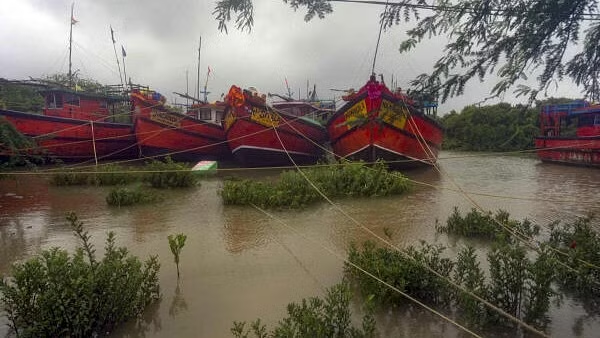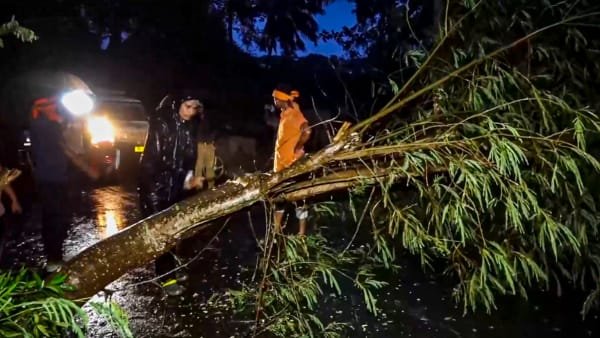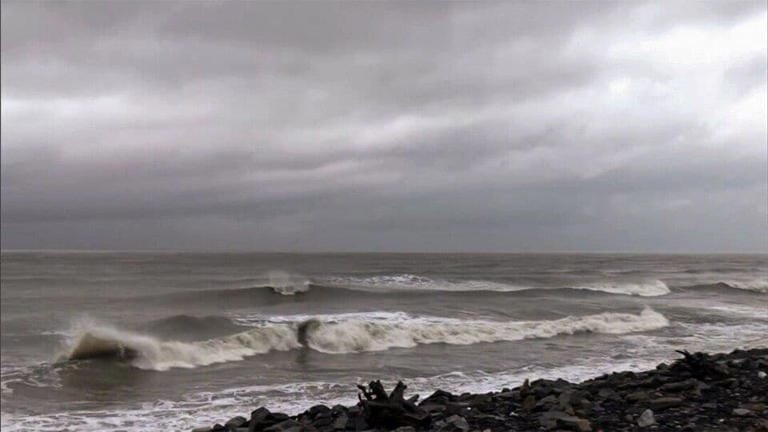Key Highlights:
Cyclone Dana, which is classified as a very severe cyclonic storm, has swept in and battered the Odisha coast by bringing with it destructive wind and torrential rains. The landfall was between Dhamra port and Baleshwar, and the storm has been advancing northwest gradually towards the interior regions of Odisha. The Indian Meteorological Department (IMD) tracked the cyclone from its formation over the Bay of Bengal, and it intensified rapidly into a severe storm on 23rd October, 2024. The cyclone has devastated both Odisha and West Bengal coasts. Thousands are evacuated in advance from vulnerable regions.
Preparation and Evacuation
As the cyclone approached, governments of both Odisha and West Bengal promptly initiated massive evacuations. Close to six lakh people have been relocated to the safety shelters, particularly from the coastal areas. The event was so planned that casualties could be reduced to a minimum as the Odisha government carries out the “zero casualty” policy in cyclone management. The IMD had forecasted that the cyclone was to generate wind speed between 100 to 110 km/h, gusting up to 120 km/h. For all those residing in the low-lying and coastal areas, the situation was precarious.

Odisha Chief Minister Mohan Charan Majhi appealed to the people to evacuate fully from risky areas. Schools were closed as a precautionary measure in all 14 districts in Balasore, Bhadrak, and Puri. Meanwhile, these two districts Purba Medinipur and South 24 Parganas of West Bengal were put on high alert as the storm was predicted to land in those areas. Kolkata, too, was battered with gusty winds and heavy rain with the onset of the storm, though the city is located quite far away from the cyclone’s core.
Damage to Odisha and West Bengal
All in all, there is an inconceivable amount of damage in the coastal districts of Odisha-the districts of Bhadrak and Kendrapara. Gusty winds uprooted trees and disabled all electricity, blocking roads in the process, making relief operations challenging. According to early reports, many roads were blocked in Bhadrak due to fallen trees, while nearly all the roads witnessed power outages. Local administrations along with the National Disaster Response Force have been clearing the debris day and night, not to mention getting any essential service restored.

Heavy rain and wind at a speed of 50-60 km/hr has lashed southern West Bengal. The waterlogging was severe, specifically in Mandarmani in Purba Medinipur and Gosaba in South 24 Parganas. Authorities are keeping a close watch, and disaster response teams are on standby.
Weather Forecast and Warning By Cyclone Dana
It predicts Cyclone Dana will gradually weaken over land while still churning up torrential rain in the next 24 hours. Several districts – Puri, Ganjam, and Jagatsinghpur in Odisha – are under a red alert, with the potential for up to 20 cm rainfall.
In districts like North and South 24 Parganas, Purba and Paschim Medinipur, and Kolkata, West Bengal is bracing itself for extremely heavy falls. Once the cyclone moves into a land area considerably, the intensity of the storm would reduce, but residual rain and squally winds may continue to assail the region for the next few days.
Response and Relief Measures
Disaster management teams consisting of units and personnel of NDRF, Army, Navy, and Coast Guard have been deployed into the affected areas. Rescue and relief efforts have been supplemented by airlift and boat movement besides essential equipment required to be used for rescue operations. The state administrations have also been able to establish hundreds of cyclone shelters with food, water, and medicines sufficient to accommodate evacuees at the shelters themselves.
Local administrations have, above all, taken care to have the essential services-health and electricity-infrastructure restored as early as possible in the area affected. Relief materials are being distributed at the relief camps/shelters, and medical teams have been dispatched there to deal with the health issues, primarily waterborne diseases that normally follow such natural calamities.
Cyclone Dana in Context
Cyclone Dana is the latest intense cyclonic storm hitting the eastern coast of India. The repeated rising tide and power of these storms have induced fear in the minds of Indian citizens. Experts on climate have linked the intensified cyclonic storms in Bay of Bengal to its increased sea temperatures, blamed for having been triggered by climate change. The susceptibility of the region to cyclones has underscored the need for more potent disaster preparedness and mitigation strategies.
Odisha, which in earlier years had been winning accolades for its proactive management approach towards cyclones, has reduced casualties by many folds compared with what had occurred in previous decades. This system on early warning, evacuation protocol, and coordination among various government agencies has become a model system for other regions prone to cyclones.
Conclusion
As Cyclone Dana traverses the land, although its immediate threat may now be unprovoked, recovery will prove to be an arduous and long process. Much more time is required to do a better job of assessing the damage on infrastructure, agriculture, and homes before relief and rehabilitation efforts may begin. It continues focused on the earliest restoration to normalcy with all safety measures while at the same time providing support to those whose lives are caught in ruins by the storm in efforts to rebuild them.
For Latest News Updates Click Here
